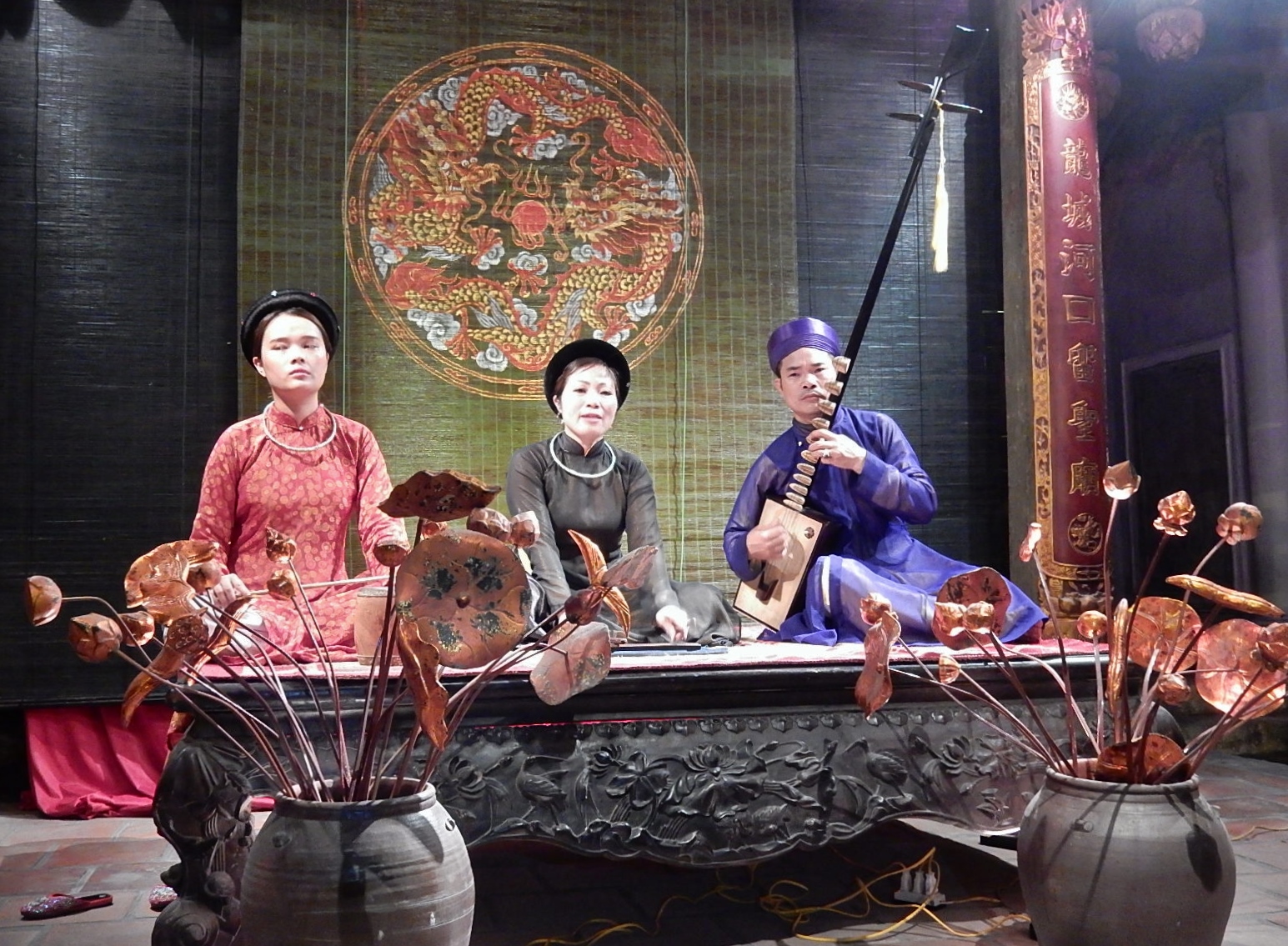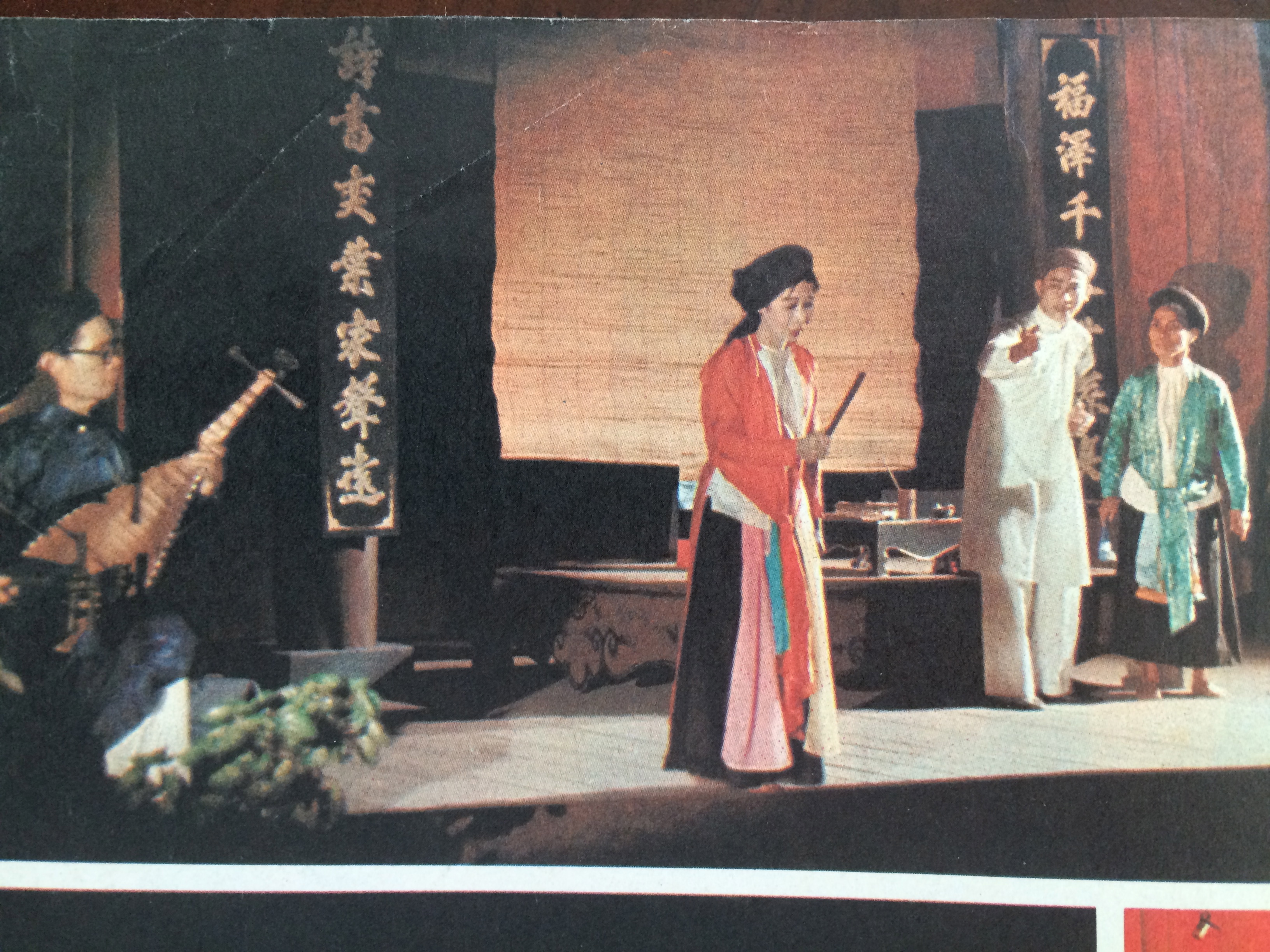|
Xẩm
Xẩm (Chữ Nôm: 眈) or Hát xẩm (咭眈, Xẩm singing) is a type of Vietnamese folk music which was popular in the Northern region of Vietnam but is nowadays considered an endangered form of traditional music in Vietnam. In the dynastic time, xẩm was generally performed by blind artists who wandered from town to town and earned their living by singing in common places. Xẩm artists often play đàn bầu or đàn nhị to accompany the songs themselves, and sometimes they form a band with one singer and others who play traditional instruments such as the drum or phách. The melodies of xẩm are borrowed from different types of Vietnamese folk music such as trống quân or quan họ, while its themes are generally '' The Tale of Kiều'', '' Lục Vân Tiên'', and other popular Vietnamese stories. History and performers The origin of xẩm was dated from the Trần dynasty in the 14th century. During the dynastic time, xẩm was popular in the Northern region of Viet ... [...More Info...] [...Related Items...] OR: [Wikipedia] [Google] [Baidu] |
Hà Thị Cầu
Hà Thị Cầu (1928 - 3 March 2013) was a famous Vietnamese xẩm Xẩm (Chữ Nôm: 眈) or Hát xẩm (咭眈, Xẩm singing) is a type of Vietnamese folk music which was popular in the Northern region of Vietnam but is nowadays considered an endangered form of traditional music in Vietnam. In the dynastic tim ... singer. Cầu was one of six traditional singers whose works were selected for study and preservation in the late 1990s.Vietnam Courier 1986 -- Page 25 "... on the dan bau (one -stringed zither) was selected to be part of a repertoire to be presented to world audiences. The four remaining airs were also selected to be part of a list of choice items : a hat xam (minstrel's) air sung by Mrs Ha-Thi Cau, " Ha Thi Cau was born in 1921 to an extremely poor family in Nam Dinh province. At an early age, she followed her parents as they wandered from town to town singing for money. Xam lyrics and the music of her parents’ generation was absorbed in her heart and mind. He ... [...More Info...] [...Related Items...] OR: [Wikipedia] [Google] [Baidu] |
Vietnamese Music
Traditional Vietnamese music encompasses a large umbrella of Vietnamese music from antiquity to present times, and can also encompass multiple groups, such as those from Vietnam's ethnic minority tribes. History Traditional Vietnamese music has been mainly used for religious activities, in daily life, and in traditional festivals. Vietnam's ethnic diversity has also made its music scene diverse. Each of Vietnam's ethnic group owns many unique types of musical instruments. The influence of Chinese culture on Vietnamese music is also quite prevalent, such as maids, harps and erhu. However, traditional Vietnamese music, whilst often compared to traditional Chinese music, is not exactly the same. Royal court music Royal Vietnamese court music first appeared in the 1040s after a successful seaborne raid against Champa led by king Lý Thái Tông in 1044. Cham women were taken as singers, dancers and entertainers for the court. The chronicles recorded that a special palace for Cham wo ... [...More Info...] [...Related Items...] OR: [Wikipedia] [Google] [Baidu] |
Music Of Vietnam
Traditional Vietnamese music encompasses a large umbrella of Vietnamese music from antiquity to present times, and can also encompass multiple groups, such as those from Vietnam's ethnic minority tribes. History Traditional Vietnamese music has been mainly used for religious activities, in daily life, and in traditional festivals. Vietnam's ethnic diversity has also made its music scene diverse. Each of Vietnam's ethnic group owns many unique types of musical instruments. The influence of Chinese culture on Vietnamese music is also quite prevalent, such as maids, harps and erhu. However, traditional Vietnamese music, whilst often compared to traditional Chinese music, is not exactly the same. Royal court music Royal Vietnamese court music first appeared in the 1040s after a successful seaborne raid against Champa led by king Lý Thái Tông in 1044. Cham women were taken as singers, dancers and entertainers for the court. The chronicles recorded that a special palace for Cham wo ... [...More Info...] [...Related Items...] OR: [Wikipedia] [Google] [Baidu] |
Chèo
''Chèo'' (, Chữ Nôm: 掉) is a form of generally satirical musical theatre, often encompassing dance, traditionally performed by Vietnamese peasants in northern Vietnam. It is usually performed outdoors by semi-amateur touring groups, stereotypically in a village square or the courtyard of a public building, although it is today increasingly also performed indoors and by professional performers. Chèo stage art is one of the great cultural heritage of the Vietnamese folk treasure. Chèo has been a popular art form of the Vietnamese people for many generations and has fostered the national spirit through its lyrical content. ''Hát chèo''s origins date to the 12th century during the Lý dynasty and has existed in its present form since roughly the 16th century. It derives from folk traditions, and was orally transmitted; unlike courtly theater traditions, it employs no scenery and sparse costumes and makeup. It involves a combination of traditional set pieces and improvisa ... [...More Info...] [...Related Items...] OR: [Wikipedia] [Google] [Baidu] |
Vietnamese Communal Temple
Vietnamese communal temples ( vi, Đình, Chữ Hán: 亭) are typical of buildings found in Vietnam Vietnam or Viet Nam ( vi, Việt Nam, ), officially the Socialist Republic of Vietnam,., group="n" is a country in Southeast Asia, at the eastern edge of mainland Southeast Asia, with an area of and population of 96 million, making i ... villages, dedicated to worship the village God Thành hoàng, the village founder or a local hero. They also play the role as a meeting place of the people in the community, akin to modern civic centers. See also * * Religious buildings and structures in Vietnam Architecture in Vietnam {{vietnam-reli-stub ... [...More Info...] [...Related Items...] OR: [Wikipedia] [Google] [Baidu] |
Vietnamese Traditional Theatre
Vietnamese may refer to: * Something of, from, or related to Vietnam, a country in Southeast Asia ** A citizen of Vietnam. See Demographics of Vietnam. * Vietnamese people, or Kinh people, a Southeast Asian ethnic group native to Vietnam ** Overseas Vietnamese, Vietnamese people living outside Vietnam within a diaspora * Vietnamese language * Vietnamese alphabet * Vietnamese cuisine * Vietnamese culture See also * List of Vietnamese people A ''list'' is any set of items in a row. List or lists may also refer to: People * List (surname) Organizations * List College, an undergraduate division of the Jewish Theological Seminary of America * SC Germania List, German rugby unio ... * {{disambiguation Language and nationality disambiguation pages ... [...More Info...] [...Related Items...] OR: [Wikipedia] [Google] [Baidu] |
Nhị độ Mai
''Nhị độ mai'' (二度梅, "The Plum Tree Blossoms Twice") is a Nôm poem of Vietnam.Asian and African studies - Volume 9 - Page 201 Slovenská akadémia vied. Kabinet orientalistiky - 1974 "Besides artistic poems, poems were written on the basis of folklore (Thach San) or on topics from Chinese literature (The Plum-tree Blossoms Twice — Nhi do mai). Nikulin calls the first half of the 19th century a "period of Confucian Reaction", ..." Text References External links Nhị Độ Mai Vietnamese Vietnamese poems {{poem-stub ... [...More Info...] [...Related Items...] OR: [Wikipedia] [Google] [Baidu] |


